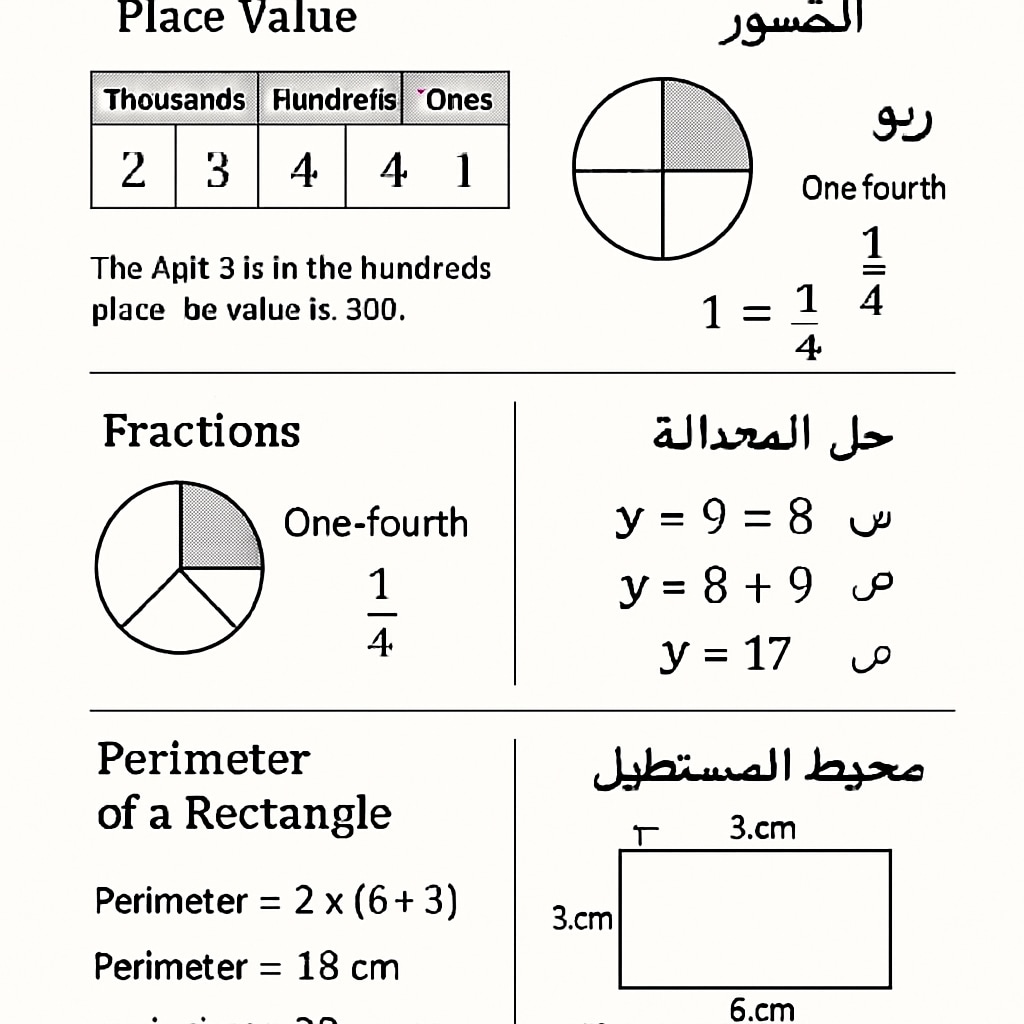High school math, teaching challenges, and Arabic language teaching are interconnected when addressing the complexities of modern education. Students in their final year of high school often struggle with advanced mathematical concepts, especially when cultural or linguistic barriers further complicate their learning process. This article examines key difficulties in high school math education and proposes innovative teaching strategies using Arabic language instruction to support diverse learners effectively.
Understanding the Core Challenges in High School Math
High school math introduces topics like calculus, linear algebra, and advanced geometry, which are pivotal for many academic and career paths. However, these subjects often pose significant challenges for students due to abstract concepts and a lack of foundational understanding. Additionally, many students experience math anxiety, which hinders their ability to process and retain complex information.
For example, the study of derivatives and integrals in calculus requires not only mathematical skills but also a conceptual grasp of real-world applications. Without proper scaffolding, students may feel overwhelmed. Similarly, linear algebra’s matrix operations and vector spaces demand logical reasoning beyond basic arithmetic principles.

Integrating Arabic Language Teaching for Multicultural Support
As global classrooms become increasingly multicultural, educators must address the unique needs of students from diverse linguistic backgrounds. Arabic language teaching offers a compelling approach to bridge gaps in understanding for Arabic-speaking learners. By incorporating culturally relevant examples and bilingual resources, educators can provide greater accessibility to complex mathematical concepts.
For instance, using Arabic translations alongside standard math textbooks allows students to connect abstract topics with familiar linguistic structures. Additionally, leveraging Arabic mathematical terminology can help students grasp ideas more intuitively. This approach not only fosters inclusion but also celebrates linguistic diversity within the classroom.

Innovative Strategies to Enhance Math and Language Learning
To break down barriers in high school math, educators can adopt several innovative teaching methods:
- Interactive Learning Tools: Digital platforms featuring Arabic translations of math problems can provide personalized learning experiences for students.
- Culturally Relevant Examples: Demonstrating math concepts through culturally familiar scenarios helps students relate to the material more effectively.
- Peer Collaboration: Group activities where students from different language backgrounds work together foster mutual understanding and cooperation.
- Professional Development: Training teachers in multicultural and bilingual education equips them to address diverse classroom needs.
These strategies not only improve math proficiency but also promote an inclusive learning environment where all students feel supported.
The Future of Multicultural Education in Mathematics
As education systems evolve, integrating linguistic and cultural insights into math instruction will become increasingly essential. Arabic language teaching innovations exemplify how educators can address complex learning challenges by adapting to the unique needs of their students.
By combining advanced teaching methods with cultural sensitivity, schools can empower students to overcome difficulties in high school math, paving the way for academic and professional success. As a result, the intersection of math education and multicultural teaching holds great promise for fostering collaboration and understanding in diverse classrooms.
Readability guidance: This article uses concise paragraphs, lists to summarize key points, and frequent transitional phrases such as “for example,” “in addition,” and “as a result” to ensure clarity and flow. Passive voice and long sentences are minimized for better readability.


